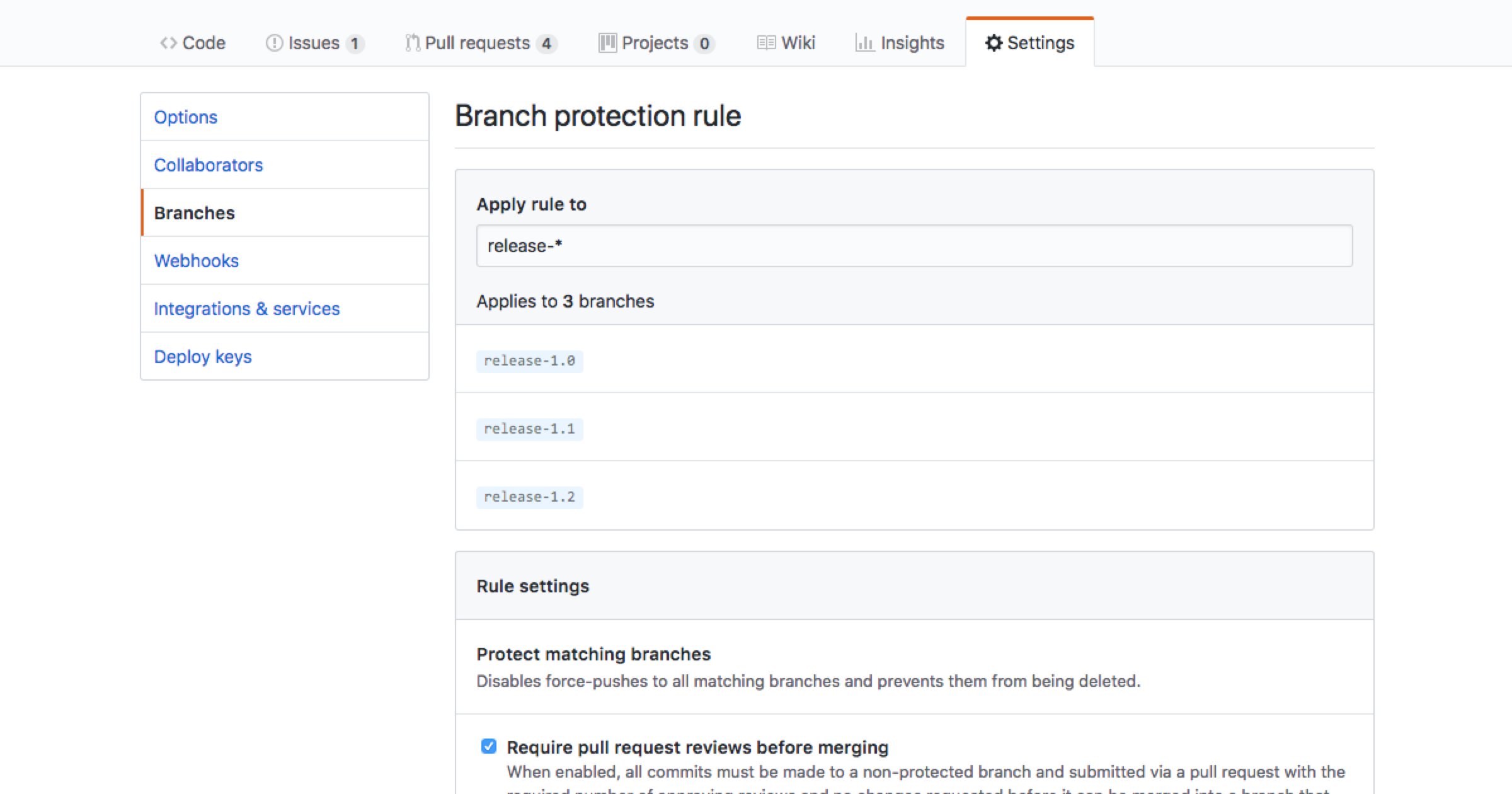Updates to protected branches
Automatically enforce protected branch settings across multiple branches in your repository.

Protected branches make sure the right reviews happen, support passing CI, and prevent force pushes. With our latest update, you can automatically enforce protected branch settings across multiple branches in your repository.
If you’re a repository owner or have admin permissions in a repository, you can now customize branch protections and enforce certain workflows, such as requiring more than one pull request review or requiring certain status checks to pass before allowing a pull request to merge.

Branch protection rules
Branch protection rules build on our existing branch protection functionality. Instead of setting up individual protections for multiple branches, you can share the same set of protections across different branches matching the same naming pattern.
Branch protection rule patterns are based on fnmatch syntax. You could use releases/v?.? to automatically protect branches like releases/v1.0, releases/v2.0, and releases/v2.1. And [1-9]-[0-9]-stable could automatically protect branches like 1-0-stable, 2-0-stable, and 2-1-stable.
View more fnmatch documentation or learn more about configuring protected branches.
Written by
Related posts

We need a European Sovereign Tech Fund
Open source software is critical infrastructure, but it’s underfunded. With a new feasibility study, GitHub’s developer policy team is building a coalition of policymakers and industry to close the maintenance funding gap.

GitHub Availability Report: June 2025
In June, we experienced three incidents that resulted in degraded performance across GitHub services.

From pair to peer programmer: Our vision for agentic workflows in GitHub Copilot
AI agents in GitHub Copilot don’t just assist developers but actively solve problems through multi-step reasoning and execution. Here’s what that means.